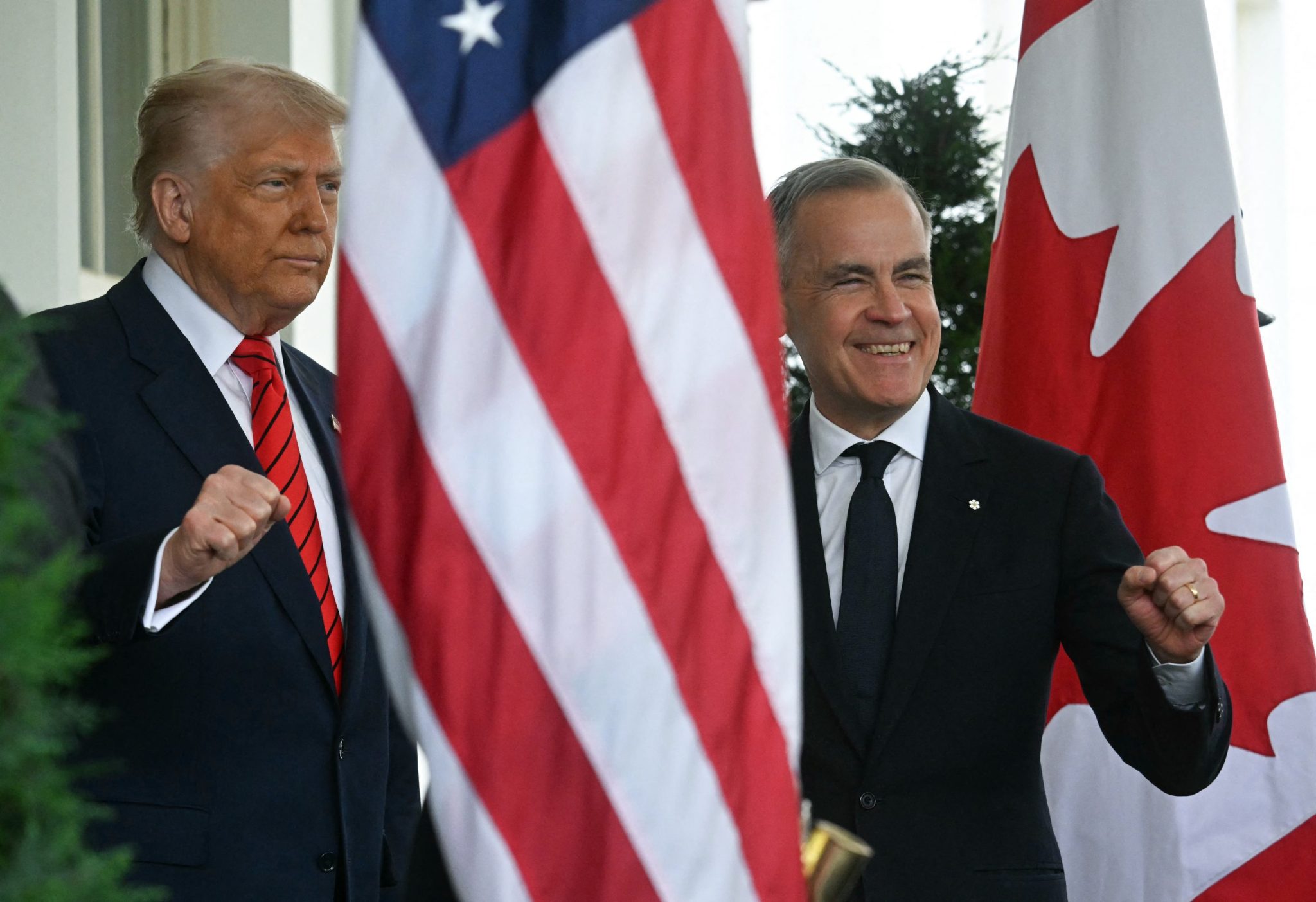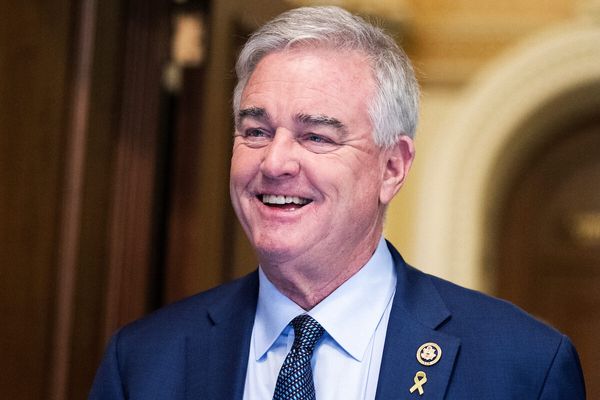
- President Trump has cut off U.S. trade talks with Canada after an anti-tariff ad featuring Ronald Reagan aired, calling it “fake” on Truth Social. Before talks collapsed, Canadian officials said Prime Minister Mark Carney was pursuing closer ties with China and may meet with President Xi Jinping at next week’s APEC summit. As China diversifies exports—now up 8.3% year on year despite U.S. tariffs—markets remain calm. UBS’s Paul Donovan said past U.S.-Canada flare-ups have been short-lived but warned that the coming Trump-Xi meeting could pose greater risks for global trade.
President Trump has terminated trade talks with Canada over an anti-tariffs ad featuring Ronald Reagan. If Canadian Prime Minister Mark Carney has any frustrations he wants to share about his southern neighbor, he may be able to do so with Chinese President Xi Jinping as soon as next week.
Hours ago Trump wrote on Truth Social, the social media site he owns, that “all trade negotiations with Canada are hereby terminated.” His fury was prompted by a Canadian TV commercial featuring President Reagan—a legend among conservatives—saying tariffs and trade barriers “hurt every American worker and consumer.”
While President Trump claimed the ad is “fake,” the Ronald Reagan Presidential Foundation said the ad “misrepresents” the radio address President Reagan made in 1987 on free trade.
Yet ahead of the talks collapsing between Ottawa and Washington, Canadian officials said in a background briefing that Carney is pursuing a “strategic relationship” with China—America’s key adversary on the global economic stage, and its most robust opponent in the tariff war.
The officials said Carney hopes to meet with the Chinese president at the Asia-Pacific Economic Cooperation summit in Gyeongju, South Korea—though nothing has been confirmed. The Canadian leader and former Bank of England governor is keen to talk to leaders from across the geopolitical spectrum, the aides added, but will be clear on the areas where Canada and China cannot cooperate.
While Canada is, of course, free to pursue a relationship with the world’s second-largest economy, it provides Beijing with another keen partner as it navigates a new relationship with America.
So far Beijing’s response to President Trump’s tariff plans has been to come to the negotiating table but diversify its trading partners as well.
According to data released by the General Administration of Customs earlier this month, China’s shipments to the U.S. fell 27% in September, the sixth month of double-digit declines to its once most valuable customer. Meanwhile, it charted strong growth to areas like the European Union (currently operating under a 15% tariff rate from the White House), leading to export growth to non-U.S. countries of 14.8%.
The shift away from the U.S. means exports are actually up 8.3% in September compared with a year ago, raking in $328.6 billion—its highest total for 2025 so far.
This development comes a matter of days before a scheduled meeting between President Trump and President Xi, with the pair also due to meet at the South Korean summit. It comes after yo-yoing rhetoric from the White House, and Trump’s threat of a 100% tariff on China come November.
Beijing’s Ministry of Commerce maintained its steadfast rebuttal to the threat, noting: “Frequently threatening high tariffs is not the right approach to engaging with China. China’s position on a tariff war is consistent: We do not want one, but we are not afraid of one.”
Trump quickly reversed course, saying he didn’t want to “hurt” the Chinese economy and added he had a good relationship with President Xi. It’s also worth noting that, in addition to reducing America’s leverage by experimenting with its export markets, China maintains a stranglehold on the rare earth minerals that the U.S. doesn’t have.
The impact
Economists are largely unconcerned by the shift in tone between the U.S. and Canada. As UBS’s Paul Donovan told clients this morning: “This has happened before, but past threats were over specific policies of the Canadian government. This time the trigger seems to be political advertisements … that might suggest a resolution is more difficult to come by. There is no policy measure that can be reversed in order to bring about a reset.
“However, financial markets are likely to be muted in their reaction, for now. The trade negotiations do not cover all trade or even most trade between Canada and the United States.”
He added: “Despite the greater difficulties of engineering a U.S. climb-down this time, past experience does suggest that these sort of issues are resolved before too long.”
Markets are more concerned about the ramifications of Xi and Trump’s meeting. “Increased uncertainty or antagonism in the Sino-U.S. trade relationship would potentially have more serious economic consequences,” Donovan added.
Jim Reid of Deutsche Bank told clients this morning the confirmation of the meeting had “buoyed hopes of a détente between the world’s two largest economies. This would be the first in-person meeting between the two leaders since Trump returned to office in January and comes as the current 90-day U.S.-China tariff truce is due to expire on November 10.”







